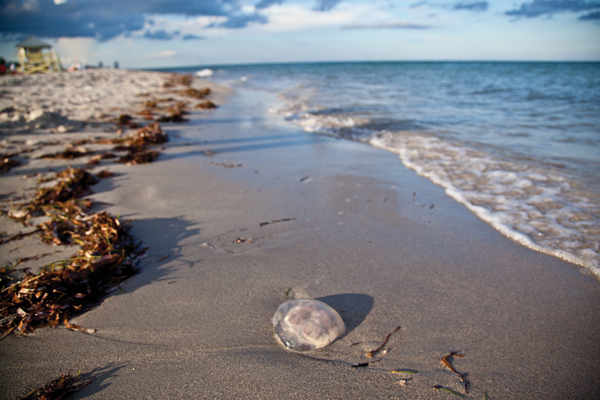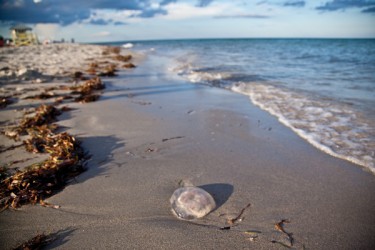

Amid blue skies and heat index values near 100 degrees, UM students headed to the beach this weekend and encountered something unexpected while approaching the water: Jellyfish had taken over the South Florida coast.
“It was almost impossible to go into the ocean because it was swarming with jellyfish,” sophomore Dawn Zasa said, after visiting South Beach on Saturday.
Though many were surprised by the purple flag adorning lifeguard posts warning swimmers of the dangerous marine life – some South Florida beaches even restricted swimmers from entering the water altogether – the jellyfish’s appearance was anything but unusual.
According to The Miami Herald, experts said Tuesday that “riptides, warm waters and weather conditions have combined to form a minefield of them, marking the unofficial start of the jellyfish season.”
Also, recent storms like Hurricane Irene and the lack of wind – until recently – could be the reason the jellyfish are hanging around, Miami-Dade County Ocean Rescue lifeguard Grace Mangas told CBS Miami.
The jellyfish, which are called moon jellyfish, spread as north as Broward County and as far south as the Florida Keys.
For instance, in Deerfield Beach, about 40 miles from Miami, lifeguards said they treated an average of 300 to 400 stings per day between Aug. 13 and Aug. 17, The Miami Herald wrote.
“There’s been more jellyfish than usual [and] it’s been keeping people out of the water,” said an anonymous source at Miami Beach Ocean Rescue who asked to be known as “Lifeguard 1.”
Senior Melisa Ramos, who visited South Beach last weekend, only walked about a quarter of a mile down the beach on seventh street and Ocean Drive and “easily saw about 100 [jellyfish].”
Two weeks after the jellyfish’s arrival, beachgoers are still dodging the dangerous marine life.
Zasa and her boyfriend, sophomore Justin Green, spent the day at South Beach on Saturday, but didn’t find it enjoyable.
“I didn’t feel safe hanging out in the ocean,” Green said. “The jellyfish came in all sizes and snuck up on you from every angle. The big ones lied on the bottom and the little ones washed up in the waves.”
Although jellyfish stings are not particularly serious, beachgoers should be wary about entering the water while the purple flags continue waving from lifeguards’ posts.
“It was my first sighting of them and the one that stung me was about 9 inches wide,” said Danny Britt, a Miami resident, who was stung Sunday by a jellyfish in Crandon Park. “I saw the marine life flag so I should have known better.”
The jellyfish stings, which are treated with vinegar by lifeguards, are extremely painful and cause itching, burning and rashes.
“I thought that if I didn’t provoke or touch the jellyfish that they would just swim by and leave me alone, but I ended up getting stung by one in a wave,” Zasa said. “It felt like a bad razor burn, and within minutes there were red lines across my leg where I was stung.”
Lifeguard 1, among other sources, are not able to predict when the jellyfish will be gone. As of Sunday, beaches in Miami Beach and Crandon Park continued to hold up the purple flag, but the ocean remained open for swimmers. However, other beaches in South Florida, including Pompano Beach which is 30 miles from Miami, did not have a purple flag flying.





